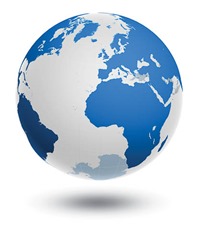The state of exports
 Michael McKernan assesses Northern Ireland’s export performance and its room for improvement.
Michael McKernan assesses Northern Ireland’s export performance and its room for improvement.
No modern economy can really succeed without strong export performance and, in recent years, particularly after consideration of the Independent Report on Economic policy in 2010, a greater focus on achieving export growth has been at the heart of government economic policy and the business mission of Invest NI.
However, Northern Ireland’s export performance remains at best patchy. Exports were badly hit by the recent worldwide recession where demand in Northern Ireland’s main export markets contracted considerably. Although over a ten-year period, the value of Northern Ireland’s exports still grew by 17 per cent in real terms, the years 2007-2008, 2008-2009, and 2009-2010 saw contractions in export value of 4 per cent, 13.5 per cent and 9.5 per cent respectively. Despite an increase in 2010-2011 (4.5 per cent) and 2011-2012 (0.4 per cent) exports actually slipped back in 2012-2013 and have yet to return to their pre-downturn level.
The latest HMRC data indicate, however, that the value of overall exports is up by 6.3 per cent in 2013-2014 reflecting the recent upsurge in manufacturing output. In this case the increase was driven largely by the pharmaceuticals/chemicals and food/beverages sectors with exports increasing by 18.4 per cent and 17.1 per cent respectively.
Northern Ireland’s exports are also concentrated across a relatively small number of sectors. In 2012-2013, five sectors alone accounted for almost 70 per cent of Northern Ireland’s exports by value. These were food, beverages and tobacco (21.4 per cent), transport equipment excluding motor vehicles and trailers (16.0 per cent), machinery and equipment (12.5 per cent), computer, electronic and optical (10 per cent), and pharmaceuticals and chemicals (8 per cent).
There has been criticism also that Northern Ireland’s exporters have been staying too close to home and have been slow to really target the high growth economies such as the BRIC countries (Brazil, Russia, India and China) where there are potentially massive economic opportunities. This is very much borne out by the official figures that show that in 2012-2013, 77 per cent of Northern Ireland’s sales were to Great Britain and the Republic of Ireland. Only 7.1 per cent were with the rest of the EU and 15.5 per cent with the rest of the world.
Over a third of Northern Ireland’s exports to the rest of the world were to North America with a further 20 per cent to Switzerland. The value of total export sales to Asia (including China and India) in 2012-2013 was £386 million (7.5 per cent of total exports), Russia £80.9 million (1.6 per cent) and South America £71.1 million (1.4 per cent).
There is therefore huge headroom for Northern Ireland exporters to go after the big emerging economies and there have been many illustrations of the power of the BRIC country demand. For example, China in particular has almost single-handedly sustained luxury car manufacturing in Europe through the recession. More recently, Chinese demand for high quality powdered milk has boosted the Irish dairy sector.
The Northern Ireland Manufacturing Sales and Export Survey for 2012-2013 also shows that although Northern Ireland is a small business economy, it is overwhelmingly the larger businesses that succeed in exporting. Although small businesses account for 40 per cent of exports to the Republic of Ireland, they account for only 4.8 per cent of exports beyond the EU, compared to 80 per cent for large businesses.
The value of Northern Ireland’s annual exports now stands at £5.5 billion although compared with other regions and competitor economies, this accounts for a comparatively low share of GDP.
For policy-makers the message is clear. There is huge scope for export growth. More must be done to build the confidence and competence of Northern Ireland’s SMEs in export markets and calls by the Northern Ireland Chamber of Commerce and others for more targeted export support, including an enhanced export guarantee scheme, should be addressed.





